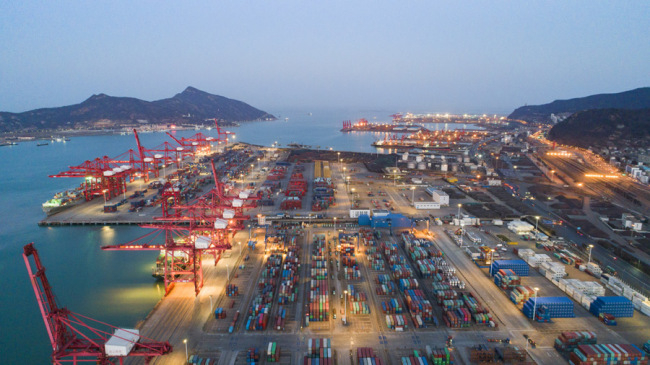

Editor's note: The article was first published by China Plus on August 27, 2019. It does not necessarily reflect the views of CGTN.
China announced a master plan for six new pilot free trade zones (FTZs) on Monday, adding to the 12 FTZs already established. Since China's first pilot FTZ was set-up in Shanghai in 2013, 171 programs tested in the zones have been rolled out across the country. More than 600,000 enterprises, including nearly 40,000 foreign-funded firms, have been set up in these zones that, despite covering less than 0.02 percent of the country's landmass, account for 12 percent of foreign investment in China and 12 percent of its imports and exports.
The six new pilot FTZs are designed to have more autonomy when it comes to making policies regarding trade and investment facilitation, financial services for the real economy, talent management and institutional innovation. According to the plan, each zone will have its own focus: Shandong will develop the marine economy, Jiangsu is to provide support to improve the quality of overseas investments, Guangxi will increase cooperation with ASEAN, Hebei will support biomedicine and health care-related industries, Yunnan will foster new models for cross-border economic cooperation, and Heilongjiang will provide a transportation and logistics hub to facilitate cooperation with Russia and Northeast Asia.
It was only a week ago that China released a guideline for the development of the tech city of Shenzhen as a demonstration area where red tape will be cut to facilitate business growth. And earlier this month, the government in Shanghai announced that its pilot FTZ was being expanded to include a new area called Lingang, where barriers will be lowered to facilitate capital flows, investment, and free flow of goods, and well-known overseas arbitration and dispute settlement organizations will be allowed to open for business.
Taken together, these measures show that China is continuing with its program of institutional reform to promote high-quality development, despite external challenges such as the trade tensions being escalated by the United States. Beijing had already fulfilled several of its reform commitments for this year, including introducing the new Foreign Investment Law in March and further shortening the negative list for foreign investment in June.
Beijing's reforms are already showing positive results. In the first half of this year, China's economy grew by 6.3 percent compared with the same period last year, one of the highest rates of growth recorded for a major economy. And the country's high-tech manufacturing and high-tech services sectors both saw investment rise by more than 11 percent in the first seven months of this year, becoming increasingly important forces driving growth.
By becoming increasingly open to the outside world, China's economy is providing new opportunities to other countries. A recent report issued by the McKinsey Global Institute showed that the index for the world's relative exposure to China had climbed to 1.2 in 2017 from 0.4 in 2000, reflecting the country's growing importance as a market for goods, services and capital for the rest of the world. And as a recent article published by Nikkei Chinese pointed out, the world is becoming more dependent on China – it's among the top three export destinations for some 70 countries. This means China is a key client to more than one-third of the world's countries.
As China continues to show its support for economic globalization, and as it opens its markets more to the rest of the world, other countries will benefit from sharing in the opportunities for growth that China has to offer.
(If you want to contribute and have specific expertise, please contact us at opinions@cgtn.com.)

Copyright © 2018 CGTN. Beijing ICP prepared NO.16065310-3
Copyright © 2018 CGTN. Beijing ICP prepared NO.16065310-3